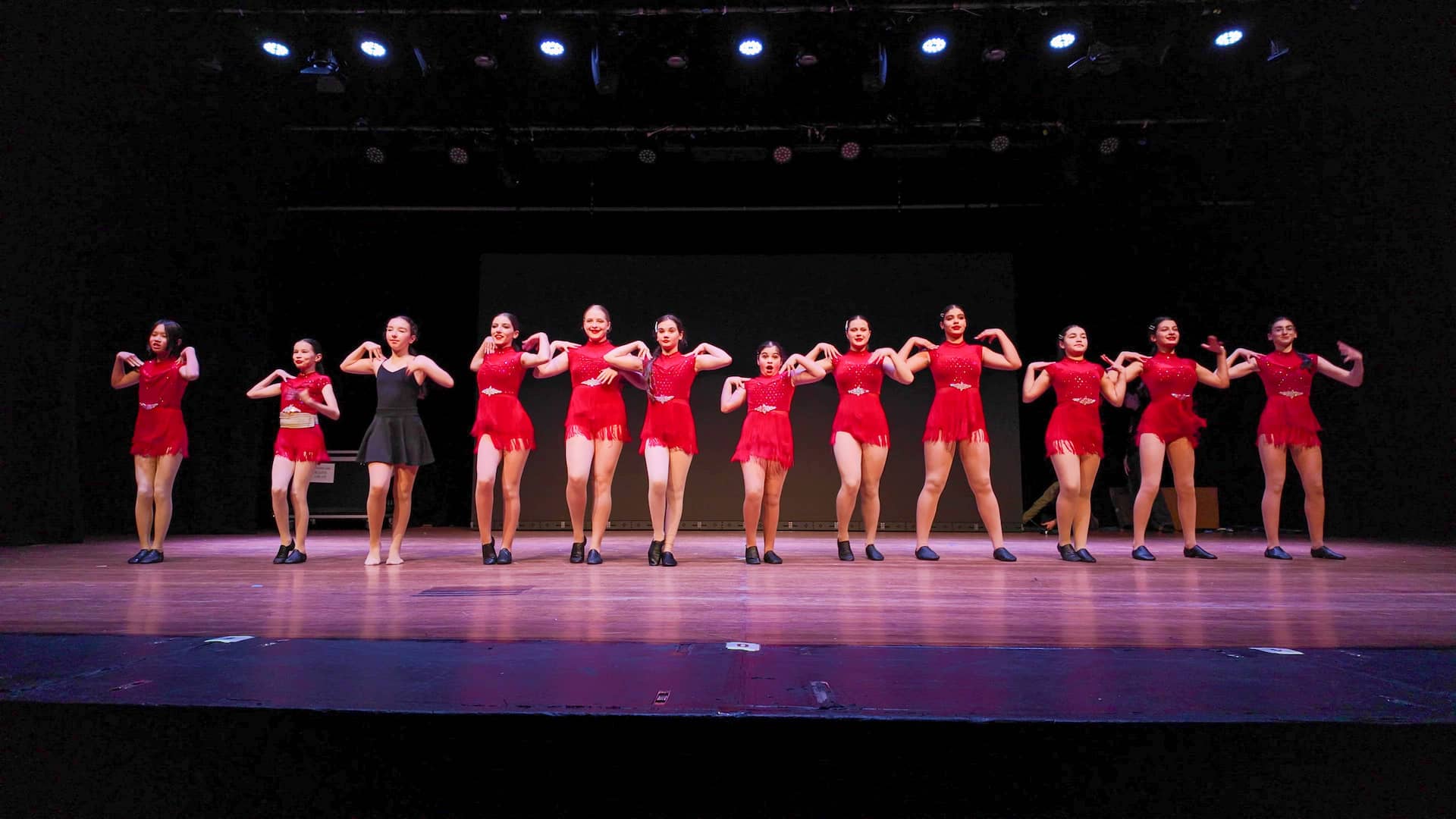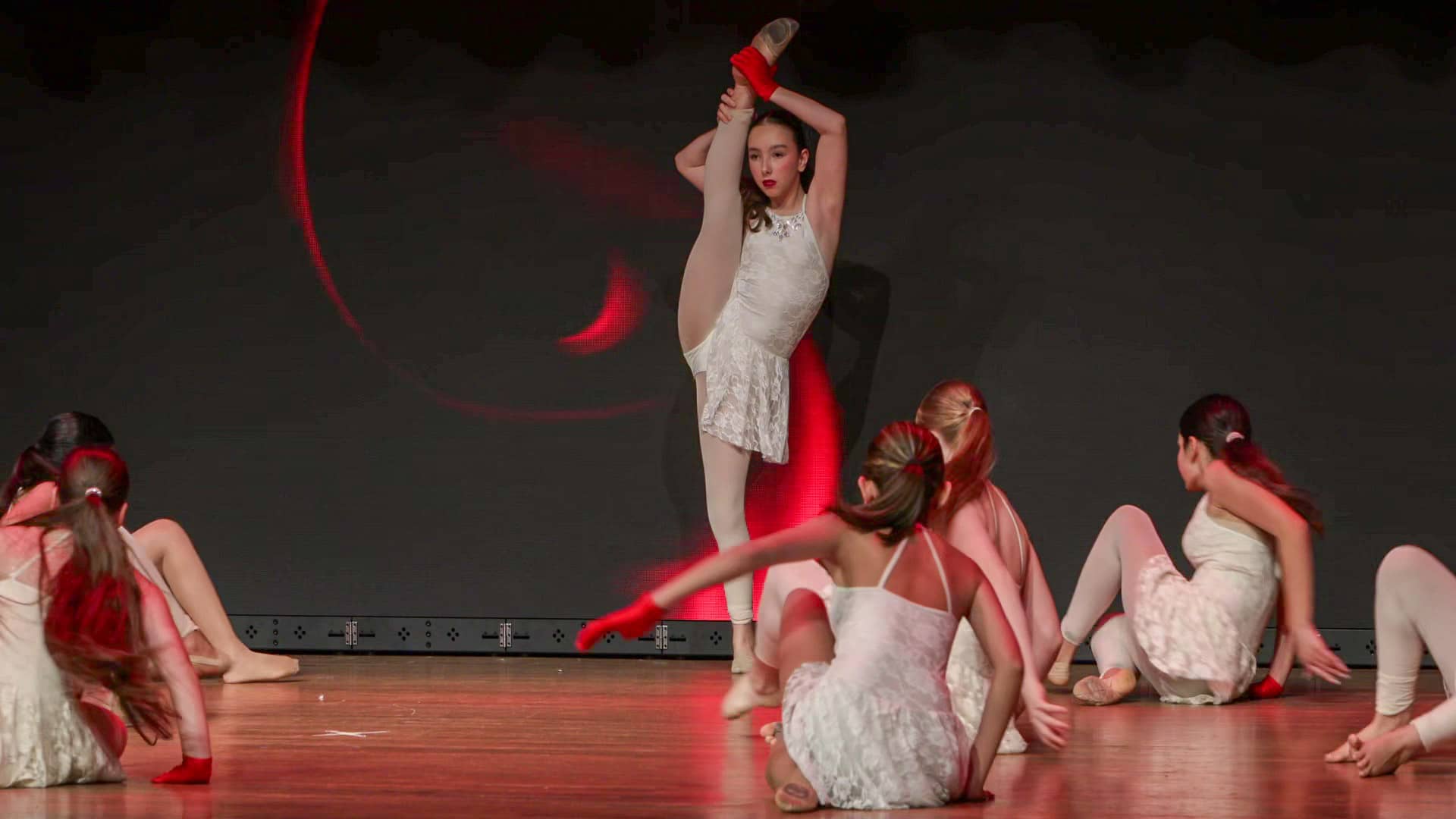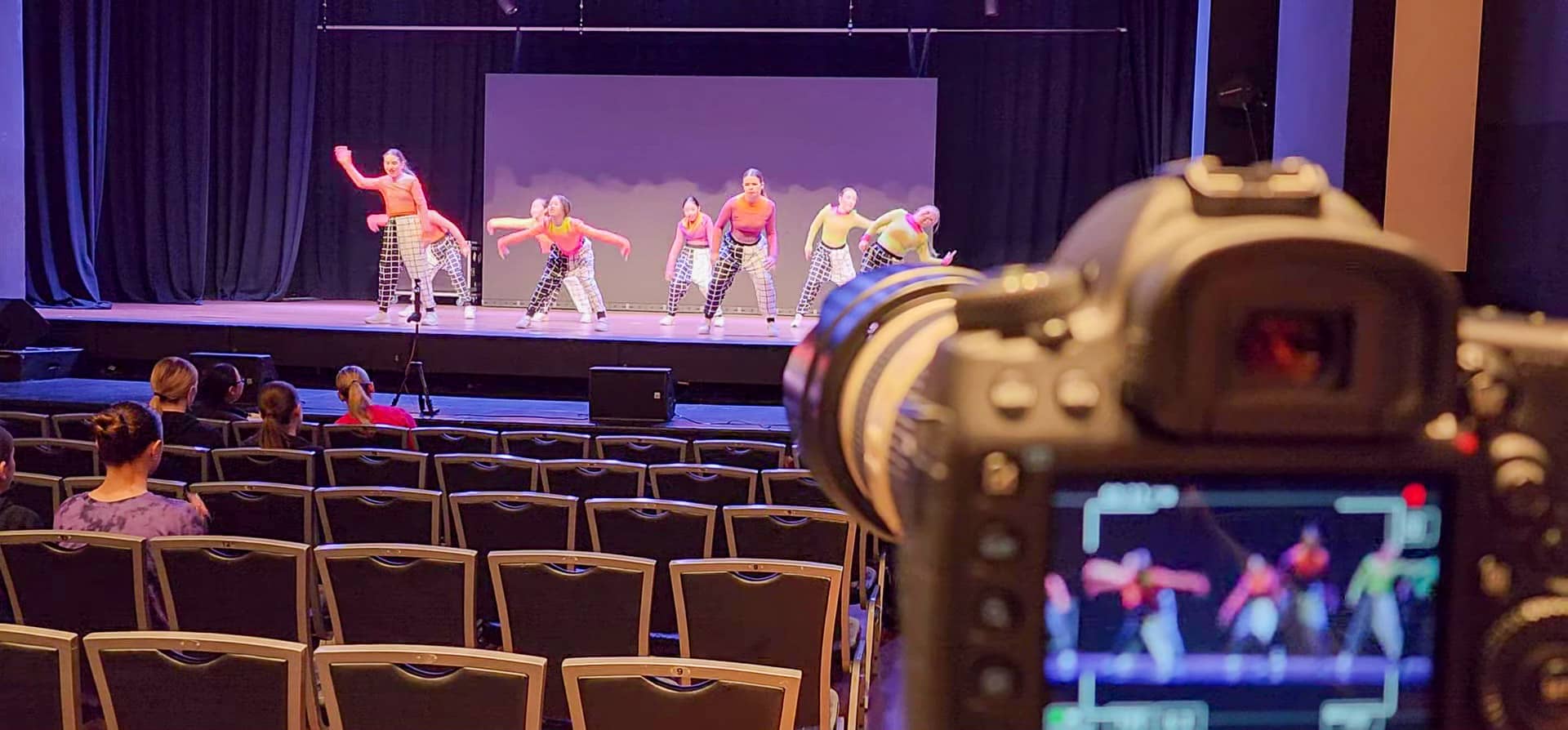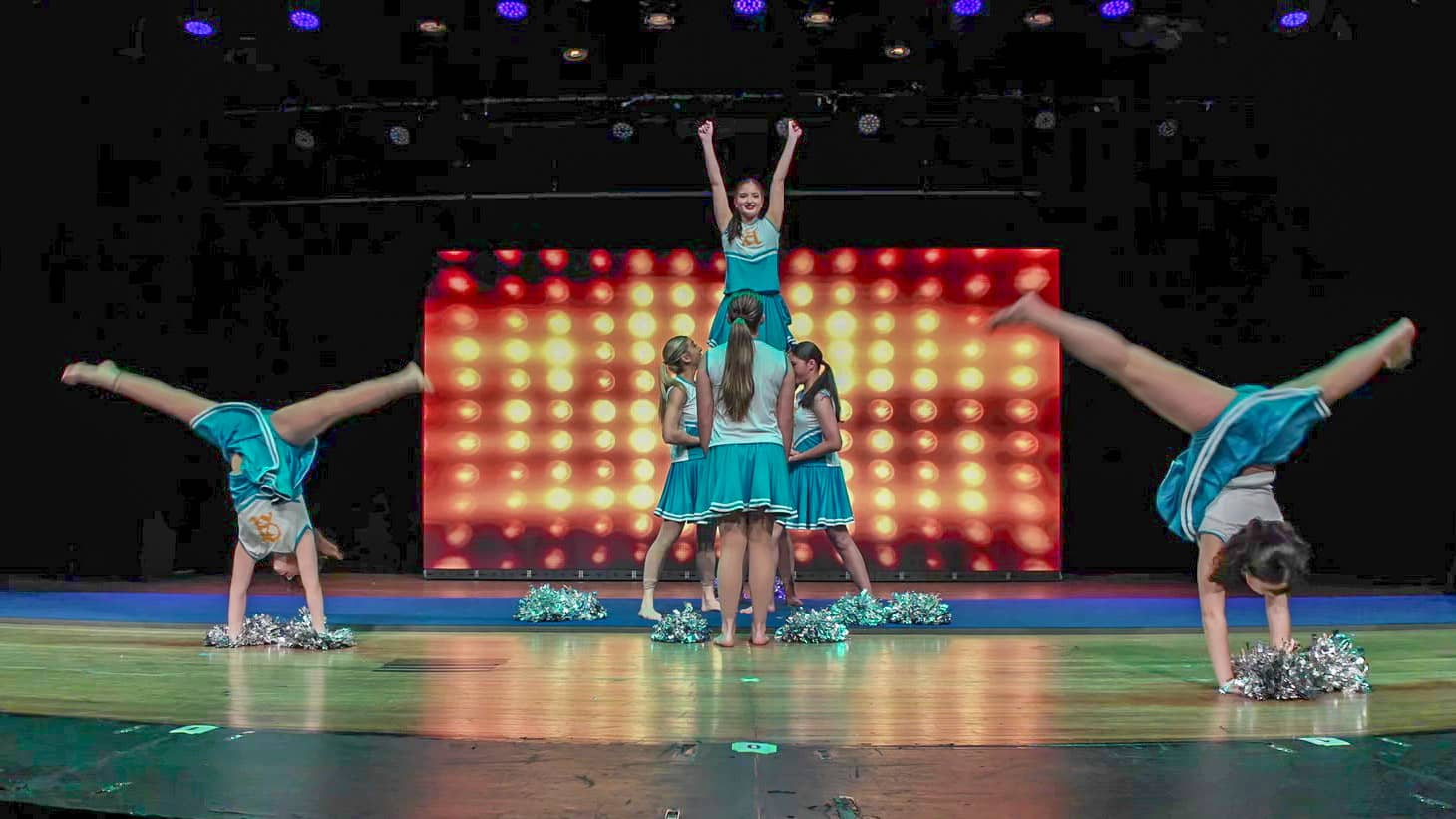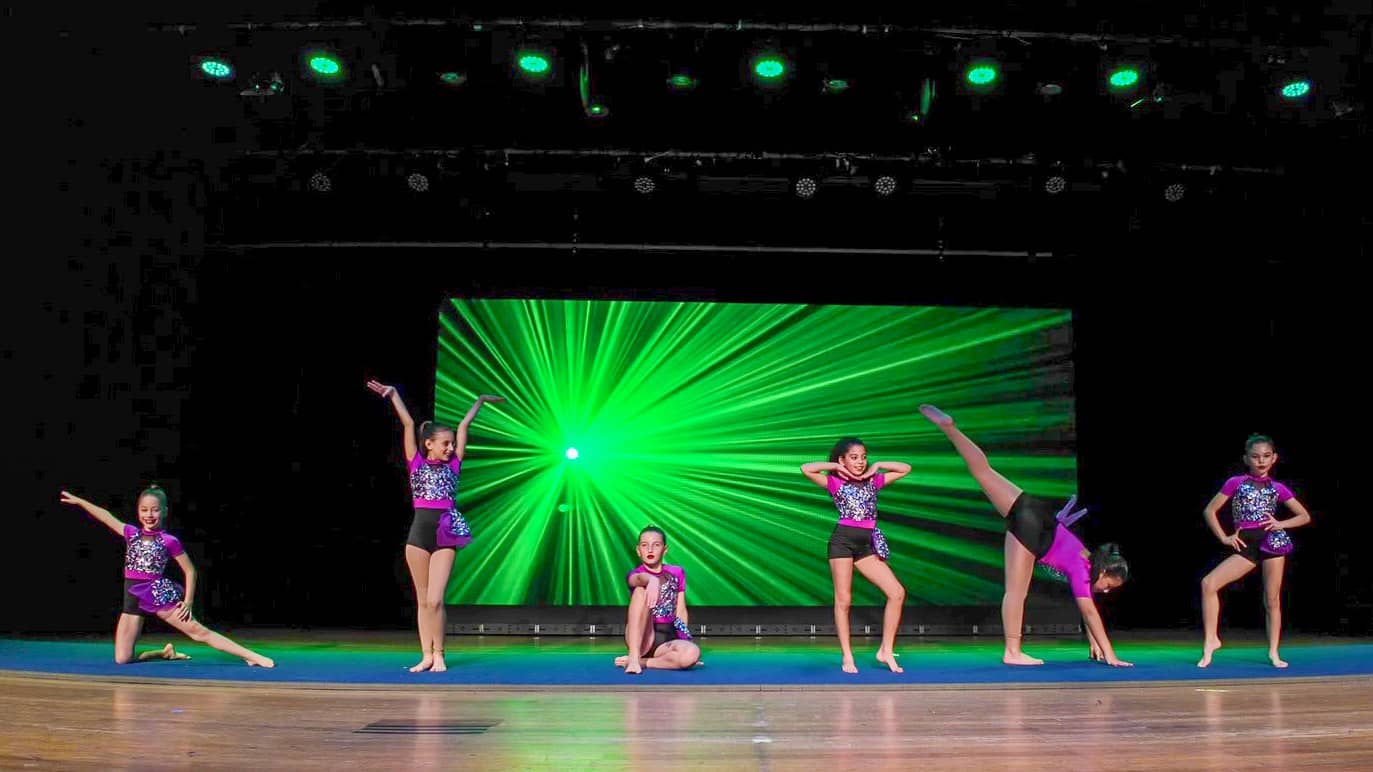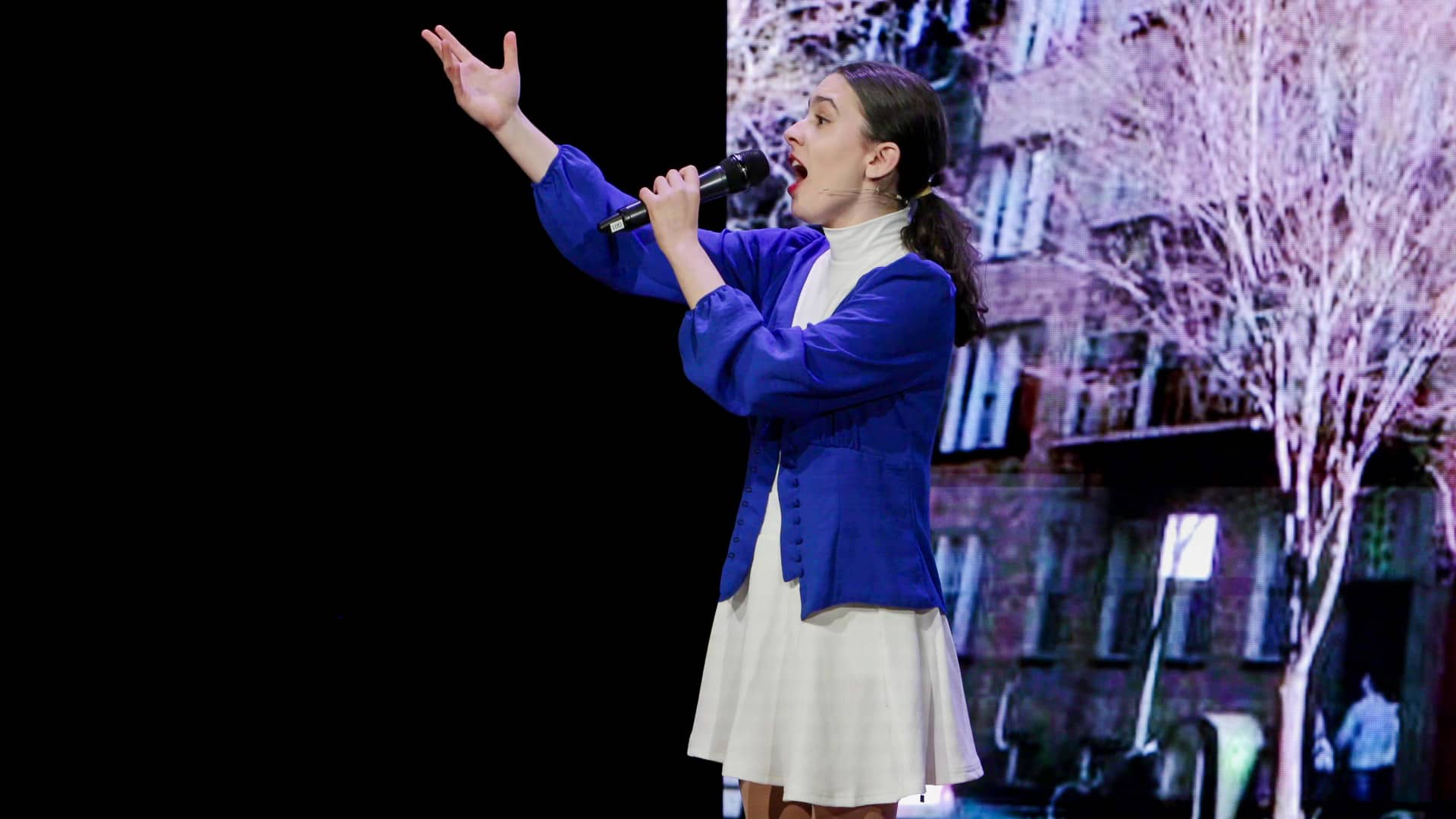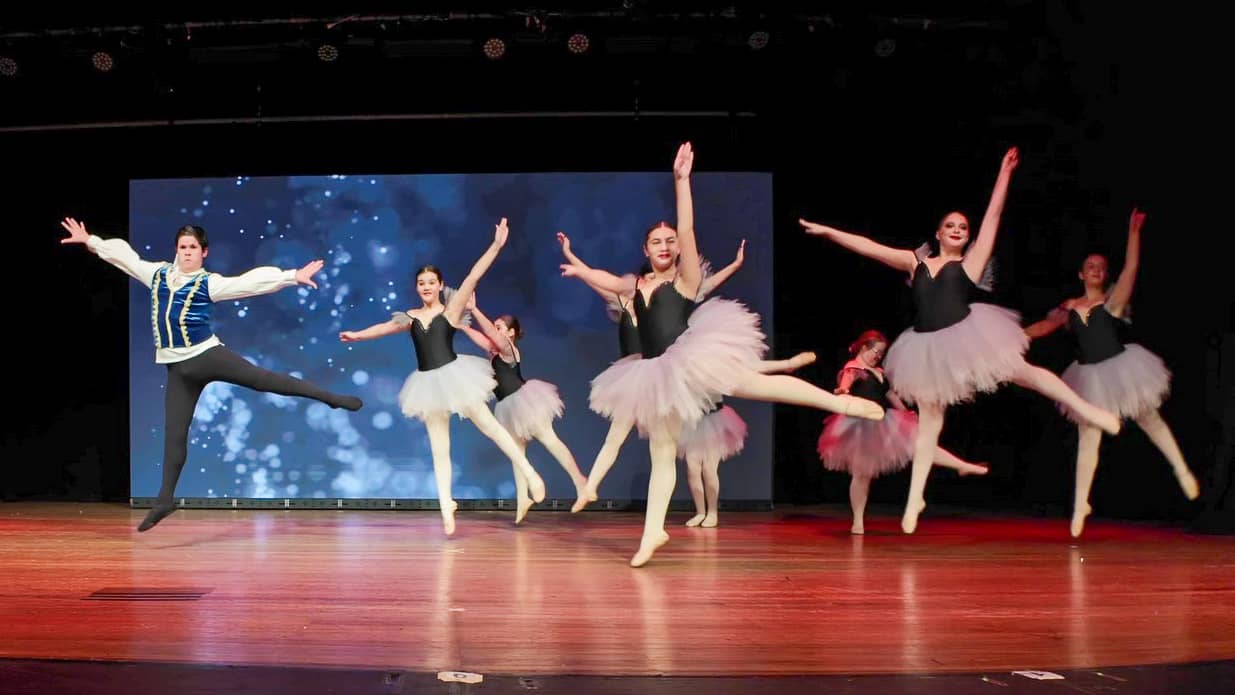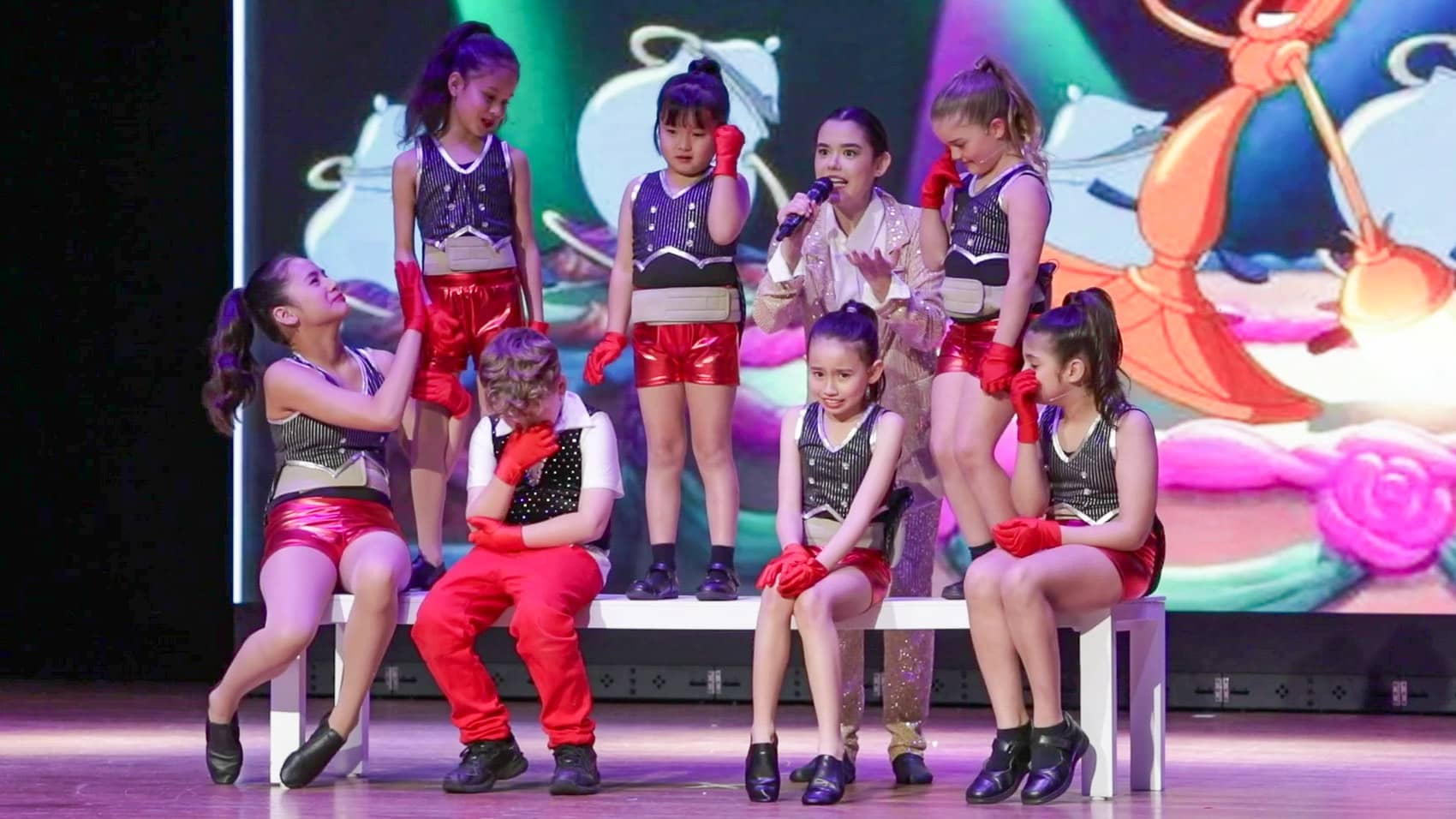Dance Concert Videography
Dance Concert Videography | Your Ultimate Guide to the Best Choice of Videographer
Are you planning for an upcoming Dance Concert for your Dance School? The performance may showcase modern dance, break dance, ballet, ballroom or a more contemporary dance style. Whatever the style of your concert, professional dance concert videography can capture every moment perfectly. This guide is aimed at guiding you through to steps in choosing the best videographer for your dance concert.
ON THIS PAGE:
- Dance Concert Videography | Your Ultimate Guide to the Best Choice of Videographer
- The Importance of Professional Dance Concert Videography
- Factors to Consider When Choosing The Right Professional Video Producer
- Researching and Shortlisting Potential Dance Concert Videographers
- Evaluating a Portfolio in Dance Concert Videography
- Understanding Different Videography Styles and Techniques
- Multi-Camera Coverage vs. Single Camera Use in Dance Concert Videography
- Making the Right Choice for Your Dance Concert
- Discussing Budget and Pricing for Dance Concert Videography
- Communication and Collaboration with the Right Video Producer
- Planning and Preparing for Your Dance Concert Videography Shoot
- Post-Production
- Post-Production & Editing Considerations for Dance Concert Videography
- Senior Dance Concert Highlights Video
- Finalising the Dance Concert Video and Distributing it Effectively
- See What Our Clients Say on Google
- Dance Concert Videography For Schools, Musical Societies & Academies
It’s important to find the right videographer for your dance school. Someone with the experience of live performances, the essential skills and necessary equipment to capture your dance concert effectively. Capturing all the movement, sounds and emotions of your dance concert and bringing it to life on the screen.
But with so many video producers available in Sydney, what are the things you need to look for when choosing the right videographer? This guide will break down all the important points you need to consider. And we will share a few tips on how to review their work and make sure the video producer can deliver everything they promise and exceed your every expectation.
The Importance of Professional Dance Concert Videography
Dance is an artform like no other. It captivates audiences through movement, choreography and the performer’s expressions of emotions. Capturing all these details on video takes skill and specialised expertise. If a dance concert video is produced correctly, students, mums and dads can relive all the very best of a performance on the screen for many years to come.
Commissioning the right producer ensures all the energy, flow and subtlety of the performance translates to the screen. Many factors like camera placement, lighting, and audio all combine to do justice to a dance concert performance. Creative vision and technical knowledge to frame the action, follow the performers movement and create a seamless mix of angles delivering a video that documents the performance effectively in an entertaining way.
The right professional dance concert videographer will capture and archive a performance for the students and families. Furthermore, they will produce a video capable of promoting a dance school effectively to a broader audience.
Factors to Consider When Choosing The Right Professional Video Producer
When choosing the right professional video producer for your dance concert, there are many important factors to consider. For example, experience, creativity, equipment, and communication skills will all make a significant impact on the final quality and success of a video.
A video producer’s experience in filming live events and dance performances is probably one of the most important factors. Video production companies with a proven track record in dance concert videography is a good start. Understanding the unique challenges of capturing a live performance like a quick transition, rapid movement whilst keeping everyone in shot is critical. A change in lighting strength and colours will impact on the images. Understanding depth of field will keep everyone in focus. Choosing the right angle will enhance the frame. All these play a part in delivering the best possible video.
The right cameras and supports plus technical capabilities are crucial. Ensure the video producer has high quality cameras, lenses and tripods capable of capturing steady sharp images in low lighting conditions when needed. Audio and video editing software will play a huge part in the final video product.
A creative approach and style of the video producer is another important consideration. The best equipment and all the technical skills in the world will mean little if the video producer fails to make use of these effectively. Look for someone who can demonstrate experience and has a portfolio that proves their expertise and good eye for composition. His ability to produce a compelling video whilst capturing all the artistry and emotions of a dance concert performance will serve you best.
Researching and Shortlisting Potential Dance Concert Videographers
A systematic approach to finding the right video producer can mean the difference between making the right choice and releasing a daunting experience. Make a list of potential video producers from using research.
Ask for recommendations from past clients. Look at example videos. Do they meet your expectations?
Explore options for dance videographers in your area online. Watch a sample of their work.
Evaluating a Portfolio in Dance Concert Videography
Critically evaluating some samples of potential dance concert video producers is an important part of the process in making the right choice. If you ask yourself some questions, it will give you a clear understanding of their potential and what you can expect from each video producer.
Look for the signs of good work. Do the shots capture movement in a variety of sizes from wide to close up shots? Are there smooth changes between shot sizes or are there annoying camera movements and shakes?
Do they give you a sense of expertise? Or does their work look like it was captured by a parent of one of the performers, maybe?
As you research potential dance concert videography professionals, make notes of specific shots and quality. Are the shots clear and sharp? Are shots obstructed by the back of people’s heads or can you see the audience moving around in front of the camera as they move from their seats?
Take note of the lighting. Do the dance concert performers look well lit? Or are they covered in shadows making it hard to see details and expressions on the faces of the performers? Are the dancers over exposed or too bright so faces look washed out and flat with no shadows? Do the skin tones look natural or do they look too red or too blue maybe?
Does the editing demonstrate professionalism? Do shots change in size in a cohesive manner? Or do you see a camera constantly zoom in and out? Does the combination of shot sizes and angles add to the production quality? Or are you looking at a simple wide shot, like a security camera looking at the stage for most of the performance?
Does the audio sound clear? If there are singers performing, do they sound natural or do they have a large echo as if the singer is performing in a very large empty hall? Do you hear a good mix or the performance and the applause from the audience or is there no audience applause heard at all?
Does the producer’s style of editing and narrative style demonstrate a sense of professionalism that you may expect from a television show? Or is it more like uncle Bob’s holiday video?
Are there titles and credits included in the video’s opening and closing sequences? Do they include the dance school’s name, logo and personnel? Is there a good list of the performances and performers in the credits, just as they may appear in the concert programme?
Does the video producer offer a range of formats of the final video from MP4 video files on a USB thumb drive or a DVD, or even files uploaded to a shared folder for your students to download and share?
Are shorter compilations of the video available from the video producer for demonstration and social media distribution?
Once you have considered the above points and maybe found a suitable dance concert videographer, contact them and ask questions about their experience, the specific services they offer that sets them apart from the rest. A list of these and technical related questions should be answered quite easily by a competent dance concert videographer.
Understanding Different Videography Styles and Techniques
Capturing a dance concert effectively on video demands a good comprehension of different dance concert videography styles and techniques. As you consider different video producers, it’s important to be familiar with the range of different styles a video producer may use and what it may mean to your expectations from a video.
A comprehensive, fly-on-the-wall perspective of a dance concert performance can be defined as a documentary style. This type of approach will often feature a good combination of wide shots to establish the overall stage from the audience perspective. Mid shots will usually feature the full height of the performer. A tight or close-up shot, of a solo performer for example, may show detail of the performer’s facial expression or a smile.
The cinematic approach may focus on more visually evocative shots. These may include creative camera movements from a slider, or artistic angles and framing. Slow motion or special effects may also be thrown in to accentuate the drama or artistry of a performance.
The strategic placement of two or more cameras around the stage or from the dress circle will also help capture the dance concert creatively. This multi-camera technique is common in film and television production and gives an improved level of production quality many people expect from a professional video producer.
Whatever the style that a professional videographer uses, they should have a deep understanding of the technical and creative aspects of video production. The video producer should be able to demonstrate their approach without question. And explain how it will ensure the final video captures the dance concert and is in line with your vision for the video project.
Multi-Camera Coverage vs. Single Camera Use in Dance Concert Videography
When it comes to capturing a live performance, especially a dance concert, one of the integral decisions to make is how many cameras the video producer will utilise. Will he rely on just one camera for all the shots? Or will he take advantage of 2 or more cameras to capture different shot sizes and angles? Each of these alternatives have their own advantages and disadvantages to consider. And your decision will depend on a few things including your expectations and your budget. So, let’s consider a few of the pros and cons for each of the options.
Multi Camera Coverage
Common in studio environments where there are 2, 3 or more cameras and operators covering a show or live performance. It’s rare not to see this technique not utilised in live professional video for the performing arts or sports.
Advantages
Multiple Angles and Perspectives: The use of multi-camera setups will capture a live performance from different angles simultaneously. Close-ups of individual dancers and performers, wide-shots of the whole stage including all the performers and some mid or medium shots to capture dynamics from the performers without constantly zooming the camera in and out to change shot sizes. This makes the final dance concert video look more dynamic and professional.
Enhanced Storytelling: With a good variety of shot angles and sizes coming from different angles, the video editor can stitch a more professional looking and compelling narrative. For example, as a group of dancers are on stage a wide shot may be chosen then if a single dancer leaps above the rest a single mid shot can be used to improve the viewers experience.
Eliminating Shot Redundancy: If an angle is obstructed by a performer’s back, or if the camera fails momentarily, another live camera can be chosen to cover the action without missing anything. This ensures all the parts of the performance are captured in the final video product.
Smooth Transitions: Switching between multiple cameras will offer smooth transitions between shots. Eliminating, for example, the need to zoom in and out to capture less or more of the stage. This will help maintain a seamless flow between shots whilst keeping the audience engaged in the performance.
Considerations
Higher Costs: Multi camera set ups are usually more expensive because of the need for additional cameras, cabling, equipment and camera operators. This extra demand of resources may significantly increase the overall production cost of the concert.
Coordination Complexity: Overseeing the use of multiple cameras and multiple operators requires a lot of communication, planning and considerations. These are put in place to ensure each camera and operator identifies their roles to cover the live performance adequately. For example if camera 3 is covering the wide shots other cameras should be doing mid or close ups to ensure there’s no unnecessary duplication of shot sizes.
Extensive Editing and Synchronisation: Editing shots from a range of cameras requires more time, computer power, skills and techniques. All cameras must be lined up in sync with each other. Plus if using an external audio source, the audio needs to be in perfect sync to avoid audio or video lag. This may increase the post production time needed.
Single Camera Use
This is more common with low budget or amatuer video production when there is 1 camera and 1 operator. Simple.
Advantages: Highly Cost Effective: Probably the primary use of just 1 camera is cutting down on costs. Less man hours at time of the performance and in post production will usually mean lower cost in the end.
Setup Simplicity: Just 1 camera means it’s easier to manage and coordinate. Focusing on just capturing the live performance, the video operator has no need to synchronise different cameras and angels. 1 man, 1 perspective.
Less Intrusive: If space is limited, 1 camera will be less obtrusive generally. Fewer people will need to move around creating a more natural coverage that will not usually distract the performers or the audience.
Considerations:
Very Limited Angles and Perspectives: A single camera can only capture 1 angle at a time. Much live the point of view of 1 single person sitting in the audience. So it’s more important than ever that the videographer chooses the best position for the whole live performance that will not compromise the coverage or obstruct the audience.
Risk of Missing the Action: The use of only one camera will mean a much higher risk of missing the action at any given time during the performance. For example if someone enters stage right and the camera is zooming in on that performer, another performer from stage left will not be captured in time unless the performance is paused.
Constraints in Editing: Editing the shots from a single camera will offer less choices to the editor and prove more challenging in terms of smooth transitions and shot variety. This can dramatically affect the viewer’s experience negatively. Especially over a live performance that may be two to three hours long. Creativity and shot selection will be compromised.
Making the Right Choice for Your Dance Concert
When deciding the best alternative between multi camera and single camera coverage, you should consider the following points:
Budget: Set a budget of what you can reasonably expect to pay for a professional video production. Multi camera coverage offers a lot of benefits including a variety of shots and perspectives for a higher cost. Whilst single camera coverage or more budget friendly, and may be less obtrusive but comes at a cost of lower overall production quality.
Complexity of the Live Performance: Consider how complex the live dance concert will be. If, for example, you have just one single performer on stage at a time, it can be easier to cover with only one camera. As opposed to having a class of twenty performers on stage with different dynamics and solos. A simpler performance may not demand more complex coverage offered by multiple cameras.
Audience and Purpose: Think about who the video is intended for. If the video is primarily intended for archival purposes or an in house review, one camera may be ok. Alternatively, if you intend to offer a video to children of a dance school and their parents. And you want to make sure multiple children are captured simultaneously in a performance, then it’s worth considering multi camera coverage for comprehensive coverage.
Venue and Logistics: Consider the venue and possible limitations. A small school hall, for example, may be crowded with a large audience leaving little space for camera operators. Plus you should think about the possible limitations of power sources, the placement of cameras and obstructions that may impact on the live audience experience.
An informed decision will be a better one than a decision made in haste. The best video production will be the one best suited to your concert, budget and your production value expectations. Consider all these very carefully.
Discussing Budget and Pricing for Dance Concert Videography
Setting a budget for your dance concert videography is something that needs to be discussed openly and candidly with potential video producers. It’s true the final video product quality is important. And it’s just as crucial to find a videographer that offers a video service to fit your budget.
In order to determine your overall video budget for your dance concert video, a good place to start is to consider factors that will determine the pricing. For example, the duration of the concert performance, its complexity and the level of post production work needed. Be sure to share these factors when negotiating with your videographer in order to tailor a dance concert video service that meets your needs.
Ask for a detailed breakdown of costs from your proposed videographer. Some of these points will include the number of cameras proposed, the crew needed, and the dance concert duration of course. These points along with If extra equipment or post production time is needed is needed may add considerably to the budget.
Additional fees such as licensing, permits, travelling costs or parking must also be considered. A thorough understanding of the scope of works for the video project and its associated costs will help you get a clearer picture of cost expectations.
The best value is not always equal to the cheapest quote. The video producer’s experience, creativity, communication skills and their ability to deliver a high quality production is important. The ability to negotiate a good deal that meets your expectations in quality will determine your best choice of video producer.
Communication and Collaboration with the Right Video Producer
Productive communication and collaboration with the right dance concert videographer are paramount to getting a great dance concert video produced From the first steps in planning to the last stages in delivering your video project a good working relationship with your videographer will ensure that your expectations are met and your dance concert is captured and translated to the screen effectively.
You should begin by scheduling a detailed discussion with your videographer. Discuss your expectations, specific requirements and the goals for your dance concert video project. You should take this opportunity to tell your videographer details including the concert venue location, the age and number of performers, the dance concert duration and any special or unique technical or choreographic that may impact your video project.
Use your initial meeting with your videographer to plan the video shoot. Your video producer should have a plan for camera placement, composition of shots, and editing techniques to get the best possible video produced.
Set up clear communication channels and methods for the upcoming production process. A discussion on updates on the project should also be put in place. This may be via Google meets, email, or a simple series of phone calls when needed. This will help to keep the project timeline on track and provide feedback on any changes needed.
Be prepared to closely discuss details with your video producer during the editing or post-production stages. It may be a good idea to see a draft or rough cut of the video before final editing is complete. This will provide you with a great opportunity to offer feedback or suggest changes. By working together through these stages, your video will most likely capture your dance concert effectively and meet or even exceed your expectations.
Planning and Preparing for Your Dance Concert Videography Shoot
Planning and preparation for a successful dance concert video shoot is essential. And it involves many key factors to make sure the best possible shots are captured. These essential tips include:
Pre-Production Planning
Understand the Performance: The videographer should meet with the dance concert choreographer and dancers to understand how the performance will flow and any key moments of the performance. Special effects and changes in lighting intensity and colours should also be discussed.
Scout the Venue: The videographer should visit the venue at rehearsal, if possible, to plan where cameras will be placed, examine lighting setups and identify potential obstacles or hazards.
Equipment Check: All the camera gear and other equipment should be thoroughly checked by the videographer. This includes microphones, cables and other audio related gear.
Technical Preparations
Camera Settings: It’s important that the videographer adjusts all the camera settings suitable for the venue and lighting conditions. For example, colour balance in the camera must be set correctly to avoid incorrect colour reproduction in your dance concert video.
Audio Setup: The most desirable method of recording audio will be via a direct feed from the sound desk at the performance. Professional audio personnel should be able to supply a good mix of audio at line level available for your videographer to attach to his audio or video gear. However, extra microphones supplied by the videographer should be used simultaneously as a backup to ensure different audio sources are available should one source fail.
Lighting: The videographer should plan for additional lighting if the performance permits and if the performance lighting is not sufficient.
Rehearsals
Rehearsal Attendance: If a dress rehearsal is planned for the dance concert, the videographer should attend. This will allow the videographer to anticipate movements in the performance and correctly plan the correct placement of camera for optimal results. Also a camera presence at rehearsals will give the performers a good idea of what to expect from the videographer on the night of the dance concert.
Test Shots: A collection of shots should be taken at the rehearsal to check for composition and audio quality. This preparation is important at rehearsal so the videographer can adjust anything needed to make sure it all goes right on the night.
On the Day of the Shoot
Early Arrival: The videographer should plan to arrive at the show with plenty of time before the curtains are raised. Ideally arriving at least an hour early will allow time to set up cameras, connect cables and access any challenges if needed before the dance concert begins.
Coordinate with the Team: Communication with the stage manager and concert production personnel including lighting and sound teams will ensure everyone is on the same page. Communicate with the stage manager, lighting technician, and sound engineer to ensure everyone is on the same page.
Stay Flexible: At times, challenges may arise especially during a live performance like a dance concert. So it’s important that the videographer plans effectively with contingencies in place. This will ensure the performance is captured as well as possible, even though things may not run perfectly at the performance on the night.
During the Performance
Capturing Key Moments: The dance concert videography professional should focus on capturing key moments of the performance and paying attention to things like solo performances, formations and a dramatic change in lighting.
Camera Angle Variety: There is nothing more boring than watching a dance concert video that has one continuous shot size and angle. A good variety of shot sizes should be utilised to suit each instance of the dance concert. Your videographer should switch between wide, medium and close up shots to keep the viewer engaged by capturing details as needed.
Solid and Steady Camera Work: All cameras used should be suitably fixed to a tripod, gimbal or other suitable camera support to ensure steady shots as opposed to shaky unviewable footage. This is especially important if the dance concert has a lot of fast moving action from the dancers.
Post-Production
Review All Shots: After all the camera and audio sources have been gathered and catalogued to the editing system, all the shots should be reviewed. This will be important when shots are selected and synchronised for the final edited dance concert video.
Editing: The vast array of non-linear editing systems available will make the editing stage a powerful one. The editing will ultimately formulate the look of the dance concert video. Enhancing the performance with titles, video filters and special effects, slow motion shots and audio fixes will all lift the production quality. Ensure that your videographer shows you examples of their abilities in their portfolio.
Feedback: Sharing a rough cut or draft video with your team will allow you to see the direction of the dance concert video before it is finalised. You can offer your videographer suggestions like adding a title before the performance or changing a shot from wide to a close up if it’s available. Working with your videographer in this stage will give you an improved level of production quality.
By following the above steps in planning and preparation for your dance concert video, you will improve your chances of a successful video that captures the performance and meets every expecatation.
Post-Production & Editing Considerations for Dance Concert Videography
Once all the shots have been captured at the dance concert, the next stage of post production and editing will complete the process. This is where the knowledge and artistry of a skilled editor will come into play to produce a great and engaging dance concert video from all the shots collected.
Firstly, the shots will need to be reviewed and sorted. If multiple cameras were used, all the video and audio clips will need to be synchronised before editing commences This will determine what the best shot is at any given time of the dance concert performance.
The editing process involves carefully selecting the best shots and angles to create a seamless engaging and compelling narrative. Cutting between angles, slow motion shots, zooms and crops are just some of the tools an editor can utilise to enhance the video.
It’s a good idea if the videographer and video editor works with you to get feedback on subjective editing decisions. A rough cut or draft video should be used to give you an opportunity to provide input.
Other elements such as colour grading, audio mixing and adding graphics and titles can be added to the production. These finishing touches will improve the production quality to a finely polished dance concert video.
Working with the video producer in the post-production stage will ensure the final product truly captures the dance concert and meets your expectations of production quality and value.
Senior Dance Concert Highlights Video
Here’s an example of a short video highlights we captured in 2024, Activ Elite Performers Shine: 1990’s. We had the privilege of capturing the incredible talent of the young performers from Activ Elite Performers, Carlton. This highlights reel showcases the best moments from the Intermediate & Senior performance in July 2024. The energy and skill displayed by these dancers were truly mesmerizing.
A short video highlights like this can be used across social media channels including Instagram and YouTube. It’s a great way of showcasing not only the diverse and special skills of the students, but also promote the dance school.
A huge thank you to Charisse and her amazing team at Activ Elite Performers for making this night unforgettable. Enjoy the show!
Finalising the Dance Concert Video and Distributing it Effectively
The final dance concert video will be finished once the post-production stage is complete. Then it’s time to think about how you will distribute the video. If you aim to make the video available to students and their parents or families, you will have a choice of factors. A DVD may be a good option for older clients like grandparents who still use their DVD player to view videos.
A USB thumb drive is another option that can be copied and distributed via post or picked up from your dance studio. However, perhaps the most economical and easily distributable format is to upload the video file to a shared folder on the internet. Sharing a link of the files to your students and their families will allow them to download it to their PC or hand held devices. It can then be saved and archived by each user so it can be replayed immediately or in years to come. Digital uploads will save on the cost of buying materials like DVDs or USB thumb drives so it will ultimately cut the cost to your and the end user.
It may be a good idea to also ask your dance concert videographer to produce a short highlight clip from the dance concert video. You can use this to promote your dance school or studio and tell the world about the success of your dance concert. It should be an appealing and engaging short video, or collection of videos, that will attract new students and clients. A good promotional video like this will help you boost your dance school exposure in the market. You can also use the video to assist with fundraising or applying for a grant if the opportunity exists. Nothing tells a story better than a well produced video.
By taking a proactive, strategic and promotional approach to your dance concert video, you will make sure it will reach a wide audience. It will also serve as a great marketing tool that celebrates all the hard work from you, your team and all your students, dancers and choreographers.
See What Our Clients Say on Google
Please Review Us on Google
We often hear positive feedback from our clients. And we’d love you to help us share the word about our services. So please click on the icon below and leave us a review on Google.
Dance Concert Videography For Schools, Musical Societies & Academies
Moving Memories provides professional video coverage for dance concerts, end-of-year performances, and eisteddfods, with packages starting at just $999. For more info please contact us with your details.



